Propagation, maintenance and flowering management of Christmas cactus
Propagation of Christmas cactus
Christmas cactus is generally propagated by direct cuttings of its stems or by grafting.
Cutting propagation of Christmas cactus can be carried out in spring, summer and autumn, but spring and autumn are better. When cutting, cut off several stems that are not too tender, soak them in 100 times liquid of new lipid film for 10 minutes to isolate virus infection, let them dry for 1-2 days, wait for the cut to dry slightly, and then cut. The cutting soil is loose sandy soil. After cutting, water it slightly and place it in the shade. Water it every 3-5 days to keep the soil moist, but not waterlogged. After about 1 month, the cutting stems will take root and sprout. The shape of the claw orchid propagated by cutting is not very beautiful, and there are not many flowers.
The grafting propagation of Christmas cactus can be carried out in spring and autumn, but it is better to graft in spring. Generally, if the plants grafted in spring are well maintained, they can bloom in the winter of the same year.
The specific method of grafting is: the rootstock is usually cactus or three-edged sword. First, cut the top of the rootstock horizontally with a sterilized blade, and then use a blade to peel off the skin to make it wedge-shaped. When cutting, it is best to cut it in one go, and do not cut it repeatedly. After the graft is cut, immediately insert it into the V-shaped opening of the rootstock, with a depth of about 2-3 cm. To prevent the scion from being connected at the same interface, you can use cactus thorns to fix it.
When grafting, gently pinch the cut of the rootstock with your hands to clamp the scion, and pause for a while so that the two parts can be tightly bonded and the liquid can penetrate each other. Apply tree protection general sterilization and disinfection in time, and then it is best to tie it with plastic film and place it in a cool and rain-proof place for maintenance. When watering, just keep the soil moist, do not water too much, and water cannot be poured into the interface. Generally, it will survive in half a month.
The grafted Christmas cactus has a more beautiful shape, and the rootstock has a well-developed root system, strong growth, strong plants, and many flowers. Generally, Christmas cactus can bloom in the same year.
How to graft Christmas claw orchid (Christmas claw lotus) onto the fairy
Schlumbergera belongs to the cactus family, with beautiful flowers and high ornamental value. It blooms from November to March of the following year, coinciding with New Year's Day and the Spring Festival, adding joy to the festival. Schlumbergera is highly adaptable and easy to cultivate. The grafting method of potted Schlumbergera is conducive to beautiful shape.
1. Grafting time
Except for the severe cold and hot seasons, Christmas cactus can be grafted at temperatures between 10 and 30 degrees Celsius. If the temperature is too high, the scion and the incision will dry out or rot easily; if the temperature is too low, it will be difficult to heal and the survival rate will be low. The specific grafting period is warm and sunny days from Qingming to Guyu, and from Hanlu to Lidong.
2. Rootstock Selection and Treatment
The rootstock for grafting Schlumbergera can be cactus, prickly pear, or cycad. Cut off green, strong, long, fleshy branches over 10 cm long from the mother plant, place them in the sun for 3-4 days, wait for the base cut to dry slightly, insert them into wet sand to promote rooting, plant them in pots after roots grow, and graft them after they survive. Alternatively, you can cultivate the grafted seedlings in the seedbed and then transplant them into pots.
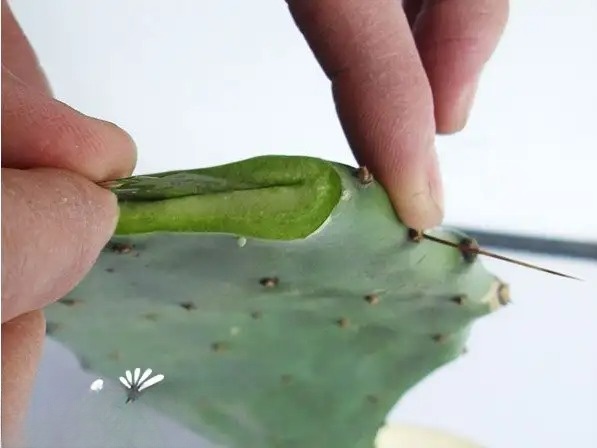
3. Cutting of scion
Choose a green and healthy Christmas cactus mother plant without diseases and insect pests, and cut 2 to 4 annual branches from the top as scion. Use a blade to cut off the lower 1/4-1/3 to expose the white wood, and cut both sides to make it wedge-shaped. When cutting, it is best to cut it in one go, and do not cut it repeatedly.
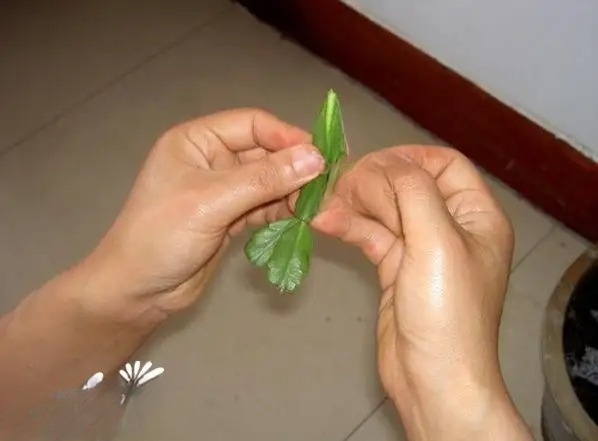
4. Grafting Method
First, use a stainless steel knife to cut off the top of the stock, cut a 2 cm notch along the center of the flat direction, the same width as the scion, then bevel the two sides of the scion base into a duck tongue-shaped cut surface of about 1.5 cm, insert it into the notch of the stock, and insert it tightly to prevent it from slipping out. If the stock is high, you can also graft multiple scions at different positions of the stem at a certain distance.
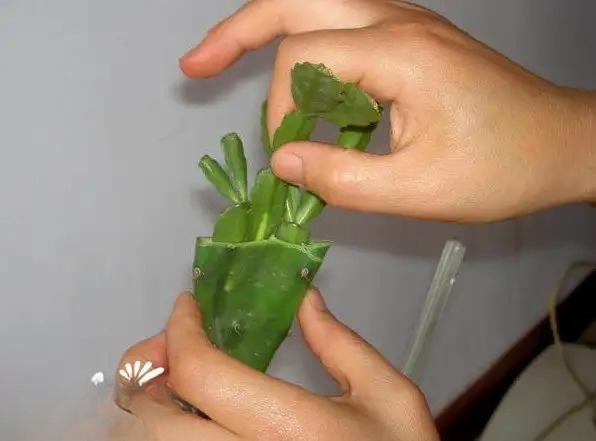
5. Post-reception management
First, it is necessary to avoid wind, keep in the shade, and avoid strong sunlight.
Second, it is necessary to avoid rain and prevent waterlogging, to prevent rain or watering from wetting the interface and causing rot. It is necessary to control watering and keep the pot soil moist to prevent waterlogging and root rot.
Third, fertilization must be accurate. Fertilization should be applied sparingly before the grafting takes effect. After the graft takes effect, low-concentration, decomposed human manure, cake fertilizer, and compound fertilizer should be used for fertilization. Fertilizer should not be applied directly to the plant to avoid stem rot.
Fourth, it is necessary to prevent and control diseases and pests. The main diseases and pests of Christmas cactus are scale insects, whiteflies, aphids and rot diseases, which must be prevented and controlled in time.
The fifth is to improve the survival rate. In order to improve the survival rate of grafted Christmas claws, you can put a plastic bag on the Christmas claws.
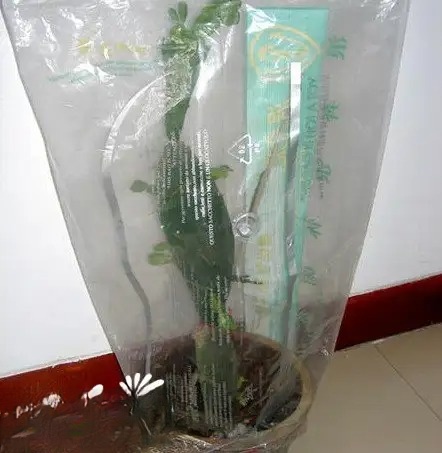
Method of grafting cymbidium cactus
The rootstocks for grafting Christmas cactus can be cacti, Opuntia scabra, etc. Taking Opuntia scabra as an example, the following is an introduction to its grafting method. This method is carried out from April to May, and a strong Opuntia scabra is selected as the rootstock.
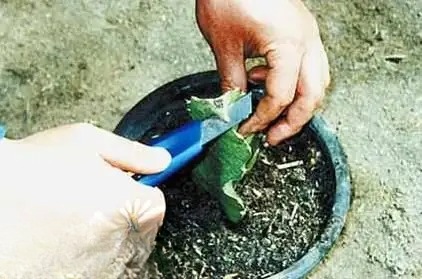
1. Cut the hymenoplasty at the appropriate position with a sterilized sharp knife.
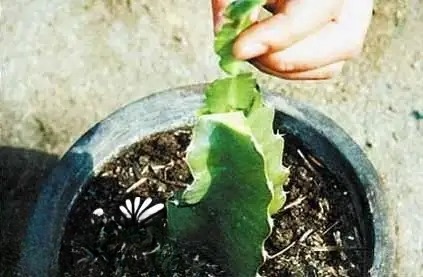
2. Make a vertical cut at the top of the medulla oblongata into a "V"-shaped crack with a depth of 1 to 2 cm.
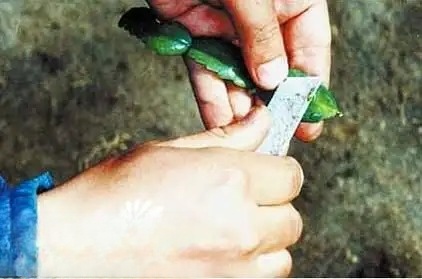
3. Pick off 1 to 2 strong top stem nodes of Christmas cactus as scion, and cut the lower end of the scion into a "V" shape.
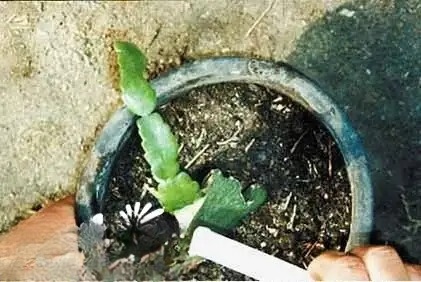
4. Immediately insert the scion into the center of the cut of the hyacinthus plant and seal the entire cut with wax liquid.
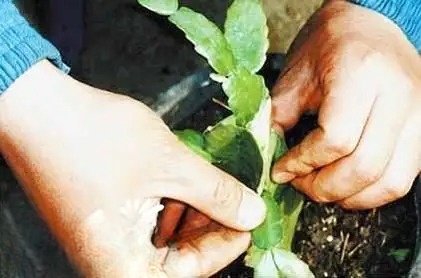
5. According to the above method, continue to cut a "V"-shaped opening on each of the three corners of the Ophiopogon japonicus, insert the three cut scions into the three cracks of the Ophiopogon japonicus respectively, and seal them immediately with wax.
How to make grafted Christmas cactus bloom in the same year

1. Grafting should be done on a sunny day with a temperature of around 20°C.
2. A large and sturdy cactus is the best rootstock for grafting. It is cold-resistant, has strong affinity with plants, is easy to survive and grows vigorously. The rootstock should be 30 cm higher than the surface of the pot to facilitate hanging in the later stage.
3. Choose light green leaves for the scion, which have a high survival rate and good growth. The scion should be a leaf spike that is about to bloom, and graft one spike at a time instead of all leaves, so that it can bloom in the same year.
4. When grafting, the rootstock should be cut first and the scion should be cut later to shorten the time for water evaporation and facilitate survival. The scion of Christmas cactus is relatively flat and thin, so it is not suitable to be cut with a knife. Use a sharp blade to scrape it lightly.
5. After the scion is inserted into the rootstock, the joint should be pinched to make it bonded. The tightness of the binding should be appropriate and no gaps should be left. In a dry environment, it can be covered with a plastic bag for 3 to 4 days.
6. 2 to 3 days after grafting, if the joint surface is good and there is no abnormality, you can untie it. After untying, place it in a shady place and observe it carefully for 20 days. When it is confirmed to be alive, you can water it thoroughly once, then move it to a sunny place and carry out normal management.
Maintenance of Christmas cactus
Christmas claw orchid likes warm, humid and semi-shady environment. The soil requires fertile leaf humus and peat. The suitable temperature during the growing period is 20℃~25℃. It is not cold-resistant and the temperature in winter should not be lower than 10℃. Christmas claw orchid likes semi-shady and humid environment. The soil for potting requires fertile field soil with good drainage, looseness and air permeability. In summer, it needs to be shaded and sheltered from rain. It is best to place it in a well-ventilated window, balcony or eaves or under the bottom.

Christmas cactus is a short-day plant. Under short-day conditions (8 to 10 hours of sunshine per day), it can bloom in 2 to 3 months. If you want it to bloom in October, you can use a light-proof shade in July to treat the plant with short-day light, so that it only sees light for 8 hours a day, so that it can bloom in late September. After the buds appear on the Christmas cactus, the pot soil should not be too dry, otherwise the buds will fall off easily. When the buds are first formed, watering should be reduced as appropriate. Too much watering will also make the buds fall off easily. When it blooms, it is advisable to place it in a relatively cool room (12 C ~ 15 C), so that the flowering time can be extended. Christmas cactus has a short period of dormancy after flowering. At this time, the pot soil should be kept a little dry. After the dormancy period, when new buds grow on the top of the modified stem, normal watering and fertilization can be carried out.
In cultivation, it is often seen that some Christmas cacti grow well, but they do not bloom or bloom very little. In this case, you should check whether the placement location is appropriate, because it is a short-day plant, and the plant can only form flower buds if the light is less than 10 to 12 hours a day. If there is sufficient light during the day, and there is strong light illumination at the place where it is placed after dark, under such long-light conditions, the plant is often not easy to form flower buds. In addition, excessive shade or excessive fertilizer and water will also affect flowering. Plants that have been cultivated for more than 3 to 5 years can often reach a crown width of more than 50 cm. In order to control the plant shape, the stem nodes can be shortened in spring, and some weak or overly dense stem nodes can be thinned out. After thinning and shortening, the new stems that grow out will be green and strong, and bloom luxuriantly. Spring: After the temperature rises, it is best to place it outdoors, and water it flexibly according to the dryness and wetness of the soil. Do not water it unless the soil in the pot is dry. Generally, water it once every 1-2 days; Summer: Although the temperature is high and the transpiration is large, the Christmas cactus is dormant in summer, so the soil in the pot should be kept dry. It is not too late to water it after 1 day of drying; Autumn: The weather gradually becomes less rainy and the temperature is suitable. At this time, the Christmas cactus grows vigorously and needs more fertilizer and water. You should water it thoroughly when the surface of the pot is dry. It is best to choose fertilizer water instead of clear water; Winter: It is the blooming period of the flowers, and the soil in the pot can be kept dry and wet alternately.
Pruning and fertilizing Christmas cactus
The pruning, bud thinning and tying of Christmas cactus include: after the flowers fade in spring, cut short from 3 to 4 nodes under the remaining flowers in time, and remove some old stems and overcrowded nodes to facilitate ventilation and home maintenance; in the cultivation of Christmas cactus, sometimes 4 to 5 new branches will grow from the top of a node, and 1 to 2 should be removed in time. If there are too many weak flower buds on the nodes, some should also be removed, which can promote the uniform size of flowers and vigorous flowering; for plants cultivated for 3 to 5 years, 3 to 4 thick lead wires can be used as pillars, inserted into the soil along the wall of the pot, and the upper part is tied into 2 to 3 layers of circular brackets, and the nodes are tied to the ring to avoid overlapping and scattered nodes. At the same time, some uneven nodes are deleted to make the plant umbrella-shaped, which is beneficial to photosynthesis and display and appreciation.
In order to control the plant from growing too large and make it suitable for indoor display, when the diameter of the whole plant reaches more than 50 cm, the stem nodes can be shortened in spring, and some old and dense branches can be thinned out. After thinning, the new branches that grow will appear green and strong, and the flowers will bloom more luxuriantly. It is worth noting that pruning should be done on sunny days, not on rainy days or in summer.
The following aspects should be noted when fertilizing Christmas cactus: After Christmas cactus blooms in March, it has a short dormant period, and fertilizer and water should be stopped until new buds emerge on the nodes, then normal water and fertilizer management should be given; apply thin nitrogen fertilizer once every half a month during the growing season, and do not contaminate the nodes, so as to facilitate the nutritional growth of the abnormal stems.
Christmas cactus can be repotted every two years, usually from March to April. In addition to adding about 3 cm thick sand and gravel at the bottom of the pot to facilitate water filtration, you should also add rotted poultry pigeon droppings, broken bones, fish scales, etc. with a high phosphorus content to the culture soil, but the roots should not be in direct contact with fertilizers. When the temperature reaches above 30°C, the plant enters a semi-dormant state.
At this time, not only should it be avoided from the scorching sun and rain, but it should also be placed in a moist and cool place. At the same time, stop fertilizing and control water to prevent the root rot of the plant. Autumn and winter are the bud formation and flowering period of Christmas cactus. It can see a little sunlight in late September, and full light in mid-to-late October, which can promote flower bud differentiation and more flower buds. At this time, it is advisable to apply liquid fertilizer containing more phosphorus every 7 to 10 days, and stop fertilizing until it blooms.
How to care for Christmas cactus in winter
Experts give advice on 6 major questions about growing Christmas cactus
Q: How to thin out the buds of Christmas cactus?
Expert: There are often 2 to 3 flower buds at the top of the stem node of Christmas cactus, which will cause too many flower buds and competition for nutrients among the flower buds. At this time, bud thinning is needed to concentrate the supply to the remaining flower buds, so that the flower buds grow stronger, the flowers are uniform in size and bright in color, and at the same time, the flower buds at each end node develop normally and uniformly. The method of bud thinning is to keep the strongest flower bud in the leaves of each end node and remove all the others.
Q: After the Christmas cactus has finished blooming, the stems at the flower nodes become soft and wrinkled, as if they are about to die. Is this normal?
Experts: It is normal for the nodes of Christmas cactus to become soft and wrinkled after the flowering period. This is because the Christmas cactus enters a dormant period. There is no need to worry about its death. This dormant period lasts about 1 month. You can take this opportunity to prune the nodes of the plant and cut off 1 to 2 nodes to keep the plant shape neat. In addition, the amount of watering should be controlled during the dormant period, and the plant should be placed in a well-lit and ventilated place. Spray the plant frequently, and the nodes of the plant can be managed normally after the dormant period ends.
Q: How can one propagate a new Christmas cactus at home?
Expert: There are three main methods for propagating Christmas cactus: cutting, grafting and sowing. For ordinary families, cutting propagation is suitable. The specific operation is: select strong and thick stem nodes, cut off 1-2 nodes, put them in a cool place for 2-3 days, and insert them into the sand bed after the cut is slightly dry. The substrate is peat and sand in a ratio of 4:1, and the temperature of the cutting bed is 15-20℃. The humidity of the cutting bed should not be too high to prevent the cut from being too wet and rotten. Rooting begins 2-3 weeks after cutting, and it can be potted after 4 weeks.
Q: How to make Christmas cactus bloom early?
Expert: Christmas cactus is a short-day plant. It can only bud and bloom under short-day conditions in autumn and winter. If you need to make Christmas cactus bloom early, you can treat it with short-day light. 8 hours of short-day shading treatment per day can make it bloom one month earlier.
Q: What causes Christmas cactus to turn yellow, and how to deal with it?
Experts: The main reasons for the yellowing of Christmas cactus are: high temperature, strong direct sunlight, dry air, poor ventilation, alkaline soil and spider spiders. These factors will cause the nodes of Christmas cactus to turn yellow or even fall off from the base. In high temperature seasons, pay attention to shade and spray water on the plants frequently. At the same time, pay attention to keeping them in a ventilated place for maintenance. When spider spiders are found, spray 80% dichlorvos 1500-2000 times diluted.
Q: How to water Christmas cactus in winter?
Expert: Watering: Winter temperatures are low, and the amount of water evaporated from the pot soil is reduced. Schlumbergera does not need much water, so try to control watering. For Schlumbergera grafted on cacti or wood unicorns, the pot soil can be kept slightly moist. Too wet may cause root rot and bud and flower drop. Do not let the pot soil become too dry and hardened, which will also cause flower and bud drop. For Schlumbergera grafted on triangular columns, water as little as possible to prevent the triangular columns from rotting.
How to distinguish between Schlumbergera, Immortal's Finger and False Epiphyllum
The three close relatives of Christmas Claw, Fairy Finger and False Epiphyllum may be distinguishable for some long-term flower lovers, but it is not easy for general flower lovers to distinguish them, especially the difference between Fairy Finger and False Epiphyllum. Below we can distinguish Christmas Claw, Fairy Finger and False Epiphyllum through a simple leaf comparison:
Let’s first look at the Christmas claw lotus. The edges of its stem nodes are a bit like the serrated shape of a crab claw.

Then let's take a look at the fairy finger. The edges of its stem nodes are arc transition lines, unlike the edges of the Christmas claw lotus which are obviously serrated. This is the most fundamental difference, so the Christmas claw lotus and the fairy finger can usually be distinguished.

Finally, let's analyze the false epiphyllum. It is not easy to distinguish between the false epiphyllum and the fairy finger. The picture below is the false epiphyllum. The shape of the stem node is basically the same as the fairy finger. The difference is that there is a purple-brown edge on the edge. If you don't pay attention, it is difficult to distinguish them. The stem node of the false epiphyllum is slightly larger than that of the fairy finger. These are not easy to see. From the flower, the fairy finger is generally a double-layer flower, while the false epiphyllum is a single-layer flower. The above are the most basic characteristics. If you see a whole pot of flowers, you must be careful to distinguish them.

I believe many flower lovers should be able to distinguish Christmas claws, fairy fingers and false night-blooming cereus through simple leaf comparison, but more observation is needed to distinguish them more clearly.
In addition, here are some identification pictures made by other flower friends
